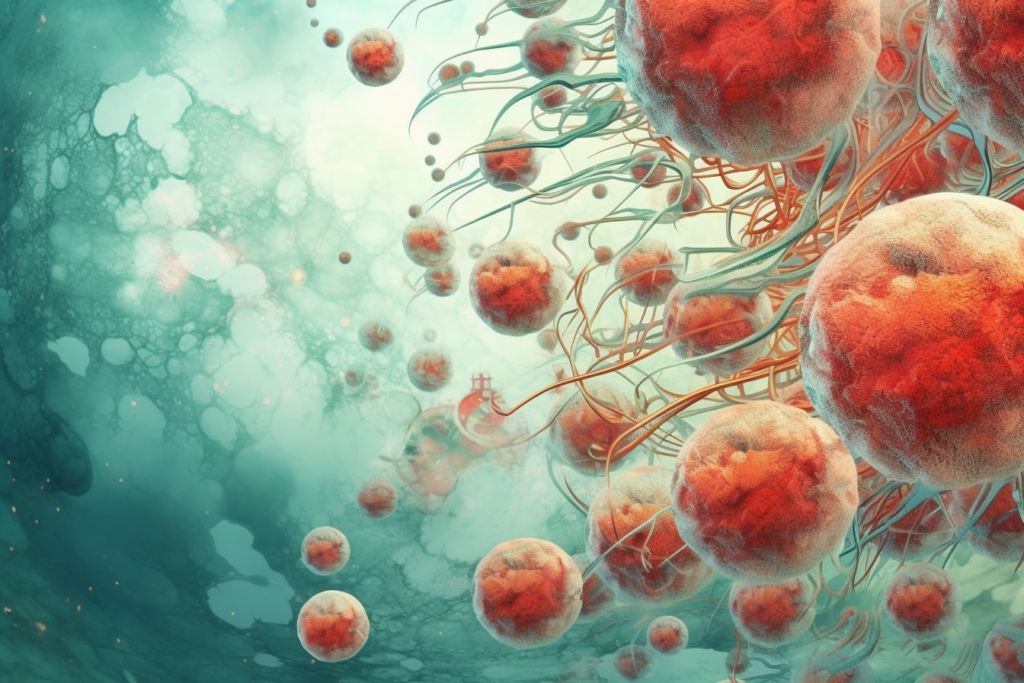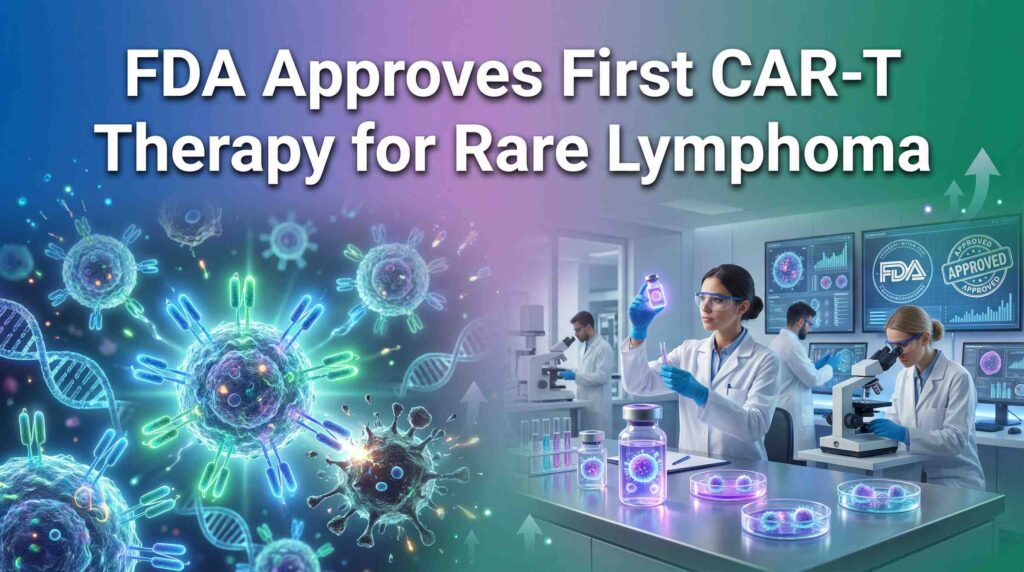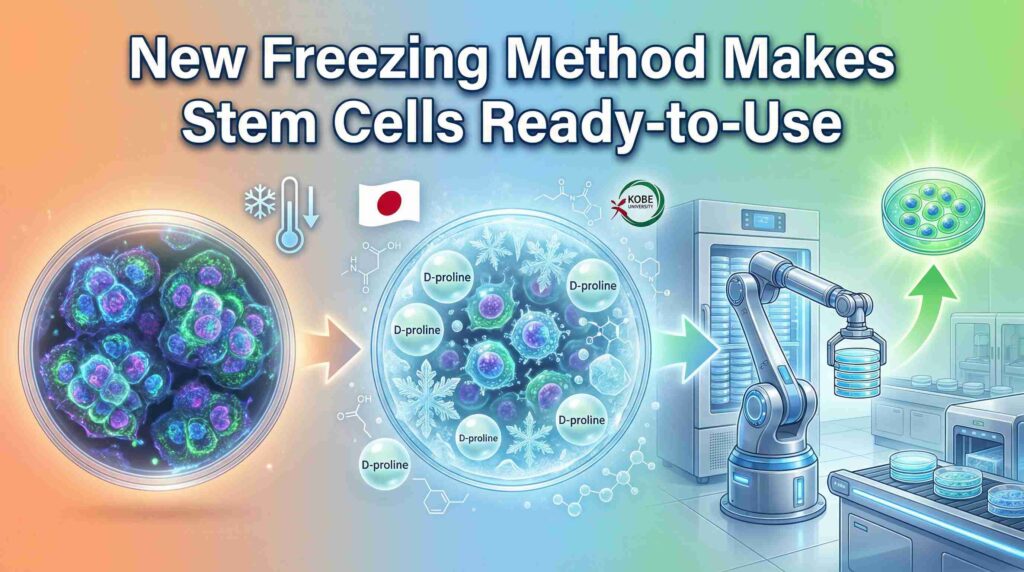Welcome to our exploration of a fascinating and rapidly evolving field of medicine: newborn stem cells and their potential in treating genetic diseases. As parents-to-be, we understand that you’re likely filled with a mix of excitement and apprehension, eager to provide the best possible future for your little one. This article aims to shed light on a topic that could be a game-changer in the world of medicine and for your child’s future health.
Stem cells are the building blocks of life, the foundation from which all cells with specialized functions are generated. They’re like the spare parts of the human body, capable of transforming into a variety of cell types—from blood cells to brain cells. Imagine having a toolbox that could replace any damaged part in a machine. That’s what stem cells can potentially do for our bodies.
Now, let’s add newborns to the mix. When your baby is born, they bring with them a unique gift: newborn stem cells. These cells, found in the umbilical cord blood and tissue, are even more special. They’re young, vibrant, and haven’t been exposed to environmental factors that can cause aging or disease.
In this article, we’ll take a journey through the world of newborn stem cells, exploring what they are, why they’re important, and how they could potentially revolutionize the treatment of genetic diseases. We’ll also delve into what this all means for you as parents-to-be, providing you with the information you need to make informed decisions about your child’s future health.
So, let’s embark on this journey together, exploring the incredible potential that lies within the first moments of life. We hope this exploration will not only inform you but also inspire you about the future of medicine and the health of your child.
Stay with us as we dive into the fascinating world of newborn stem cells.
What are Newborn Stem Cells?
As we delve deeper into our journey, let’s start by understanding what newborn stem cells are. These are special cells found in the umbilical cord blood and tissue immediately after a baby’s birth. They are unique because they are young, flexible, and have the potential to develop into many different types of cells in the body.

Difference Between Newborn Stem Cells and Other Stem Cells
You might be wondering, “How are newborn stem cells different from other stem cells?” Great question! While all stem cells have the ability to develop into different cell types, newborn stem cells have a few advantages. They are more adaptable, less likely to be rejected by the immune system, and have not been exposed to environmental factors that can cause aging or disease.
How are Newborn Stem Cells Collected?
Now, let’s talk about how these cells are collected. The process is safe, painless, and does not interfere with the birthing process. After the baby is born and the umbilical cord is cut, the remaining blood in the cord is collected. This blood is a rich source of stem cells. The umbilical cord tissue can also be collected as it contains a different type of stem cells.
Anecdote: The First Successful Cord Blood Transplant
Here’s an interesting anecdote to illustrate the importance of these cells. In 1988, a young boy named Matthew with a severe form of anemia, called Fanconi anemia, was treated with a cord blood transplant from his newborn sister. This was the first successful cord blood transplant, and it paved the way for the use of cord blood in treating various diseases. Today, cord blood stem cells have been used in the treatment of over 80 diseases!
In the next section, we’ll explore genetic diseases and how newborn stem cells can play a role in their treatment. But for now, take a moment to appreciate the incredible potential that exists in these tiny cells, collected at the very beginning of life. They truly are a marvel of nature and medicine.
Understanding Genetic Diseases
As we continue our journey, it’s important to understand what we mean by genetic diseases. These are disorders caused by abnormalities in an individual’s DNA. They can be inherited from parents, or they can be the result of mutations due to environmental factors or random occurrences during cell division.
Common Types of Genetic Diseases
There are thousands of known genetic disorders. Some, like Down syndrome or cystic fibrosis, you might have heard of. Others, like Tay-Sachs disease or Fanconi anemia, are less well-known but just as impactful on the lives of those affected. These diseases can vary widely in their effects, but they all have one thing in common: they are caused by changes in our genes.
Traditional Treatment of Genetic Diseases
Traditionally, genetic diseases have been managed rather than cured. This might involve medication, physical therapy, surgery, or other treatments to manage symptoms. But these treatments often don’t address the underlying genetic issue. That’s where the potential of newborn stem cells comes in.
In the next section, we’ll explore how newborn stem cells could revolutionize the treatment of genetic diseases. But for now, remember this: while genetic diseases are often complex and challenging, the future holds promise for new and innovative treatments. And newborn stem cells could play a significant role in that future.
The Role of Newborn Stem Cells in Treating Genetic Diseases
Now that we’ve explored what newborn stem cells and genetic diseases are, let’s delve into how the two intersect. Newborn stem cells hold immense potential in the treatment of genetic diseases. But how, you might ask? Let’s break it down.
How Newborn Stem Cells Can Be Used in Treatment
Newborn stem cells, particularly those found in cord blood, have the unique ability to develop into different types of cells. This means they can potentially replace or repair damaged cells caused by genetic diseases. For instance, in conditions like leukemia or sickle cell anemia, where the disease affects the blood cells, cord blood stem cells can be used to create new, healthy blood cells.
Current Research and Breakthroughs
The use of newborn stem cells in treating genetic diseases is not just theoretical. It’s happening right now. For example, in recent years, researchers have successfully used cord blood stem cells to treat children with conditions like Krabbe disease, a rare and often fatal neurological condition. This is just one of many examples of how newborn stem cells are changing the landscape of treatment options for genetic diseases.
Case Studies of Successful Treatments
Let’s look at a real-life example. Consider the story of a little girl named Emily, who was diagnosed with Hurler’s syndrome, a severe genetic disorder. Doctors were able to use cord blood stem cells from a donor to replace Emily’s damaged cells. Today, Emily is a thriving child, living proof of the potential of newborn stem cells.
In the next section, we’ll look at the future potential of newborn stem cells. But for now, let’s take a moment to appreciate the incredible advancements that have already been made. The use of newborn stem cells in treating genetic diseases is not just a possibility—it’s a reality, and it’s changing lives.
The Potential of Newborn Stem Cells
As we’ve seen, newborn stem cells are already making a significant impact in the treatment of genetic diseases. But what does the future hold? Let’s explore the potential of these incredible cells.
Future Possibilities for Newborn Stem Cell Treatments
The possibilities for newborn stem cell treatments are vast and exciting. Researchers are continually discovering new ways these cells can be used. For instance, scientists are exploring how they might be used to treat conditions like autism and cerebral palsy. There’s also ongoing research into using these cells to regenerate damaged tissue, offering hope for diseases like heart disease or neurodegenerative disorders.
Ongoing Research and Anticipated Advancements
The field of newborn stem cell research is rapidly evolving. Every day, scientists are learning more about these cells and how they can be used in treatment. With advancements in technology and our understanding of genetics, we can expect to see even more breakthroughs in the coming years.
The Role of Newborn Stem Cells in Personalized Medicine
One of the most exciting areas of research is the role of newborn stem cells in personalized medicine. This is a growing field of medicine that uses a person’s genetic makeup to guide the prevention, diagnosis, and treatment of disease. Newborn stem cells could play a crucial role in this, offering treatments tailored to the individual’s genetic profile.
Considerations for Parents-to-be
As we’ve explored, newborn stem cells hold immense potential for the treatment of genetic diseases. But what does this mean for you as parents-to-be? Let’s delve into some key considerations.
The Process of Collecting and Storing Newborn Stem Cells
The collection of newborn stem cells is a simple and safe procedure that doesn’t interfere with the birthing process. Once your baby is born and the umbilical cord is cut, the remaining blood in the cord, which is rich in stem cells, is collected. If you decide to store these cells, they can be cryopreserved in a cord blood bank for potential future use.
Potential Benefits and Risks
The potential benefits of collecting and storing newborn stem cells are significant. These cells could be used in the treatment of various diseases, offering a form of biological insurance. However, it’s also important to understand the limitations. While the field of newborn stem cell research is promising, it’s still evolving, and there are no guarantees.
Ethical Considerations
There are also ethical considerations to keep in mind. While the collection of newborn stem cells poses no harm to the mother or baby, decisions around storage and potential use can raise ethical questions. It’s important to have open conversations and seek advice from healthcare professionals to make informed decisions.
FAQ
Q: What are stem cells?
A: Stem cells are undifferentiated cells that can become specialized cell types and can divide to create more stem cells. They have the ability to differentiate into various cell types that make up the human body.
Q: What are the types of stem cells that exist?
A: There are 4 main types of stem cells: embryonic stem cells, pluripotent stem cells, adult stem cells, and induced pluripotent stem cells.
Q: What is the difference between embryonic stem cells and pluripotent stem cells?
A: Embryonic stem cells are derived from embryos and have the potential to give rise to all cell types in the human body. Pluripotent stem cells are similar but are not derived from embryos and are created by artificially inducing cells to become pluripotent through genetic reprogramming.
Q: What are adult stem cells?
A: Adult stem cells are undifferentiated cells that are found in various tissues throughout the human body and can be used to replace damaged or diseased cells in the same tissue.
Q: What are induced pluripotent stem cells?
A: Induced pluripotent stem cells are adult cells that have been genetically reprogrammed to become pluripotent and have the ability to differentiate into various cell types.
Q: What is stem cell-based therapy?
A: Stem cell-based therapy is a type of medical treatment that uses stem cells to repair damaged tissue or replace diseased cells in the body.
Q: How are stem cells transplanted into the body?
A: Stem cells can be transplanted either through a direct injection or through infusion into the bloodstream, depending on the type of cells being used and the intended treatment.
Q: What are some potential stem cell-based treatments for genetic diseases?
A: Potential stem cell-based treatments for genetic diseases include hematopoietic stem cell transplantation for blood disorders and induced pluripotent stem cell-based therapy for inherited disorders such as cystic fibrosis or sickle cell anemia.
Q: What are embryonic stem cell lines?
A: Embryonic stem cell lines are groups of indefinitely dividing stem cells that have been derived from the inner cell mass of a pre-implantation embryo and can be used for research and therapeutic purposes.
Q: Are there any ethical concerns surrounding stem cells?
A: Yes, there are ethical concerns surrounding the use of embryonic stem cells due to the destruction of embryos that is required to obtain them. However, other types of stem cells, such as adult stem cells and induced pluripotent stem cells, do not present such ethical concerns.
Conclusion
We’ve journeyed through the fascinating world of newborn stem cells, exploring their potential in treating genetic diseases. From understanding what these cells are and how they’re collected, to delving into the world of genetic diseases and the role newborn stem cells can play in their treatment, we’ve covered a lot of ground.
The potential of newborn stem cells is immense. They’re not just cells; they’re a beacon of hope for the future of medicine. They offer the possibility of new treatments, of cures for diseases once thought incurable, and of a future where each individual’s treatment can be tailored to their unique genetic makeup.
As parents-to-be, the decision to collect and store your baby’s newborn stem cells is a personal one. It’s a decision that should be made with a full understanding of the potential benefits, the limitations, and the ethical considerations.
We hope this exploration has not only informed you but also inspired you about the future of medicine and the health of your child. The world of newborn stem cells is a world of potential, a world of hope, and a world of life-changing possibilities.
Resources for Further Reading
For those interested in learning more about newborn stem cells and genetic diseases, we encourage you to explore further. There are numerous resources available, from scientific articles to patient stories. And remember, healthcare professionals, genetic counselors, and other experts are there to guide you through this journey.
Thank you for joining us on this exploration. Here’s to the incredible potential of newborn stem cells, and to the exciting future of medicine they represent.


